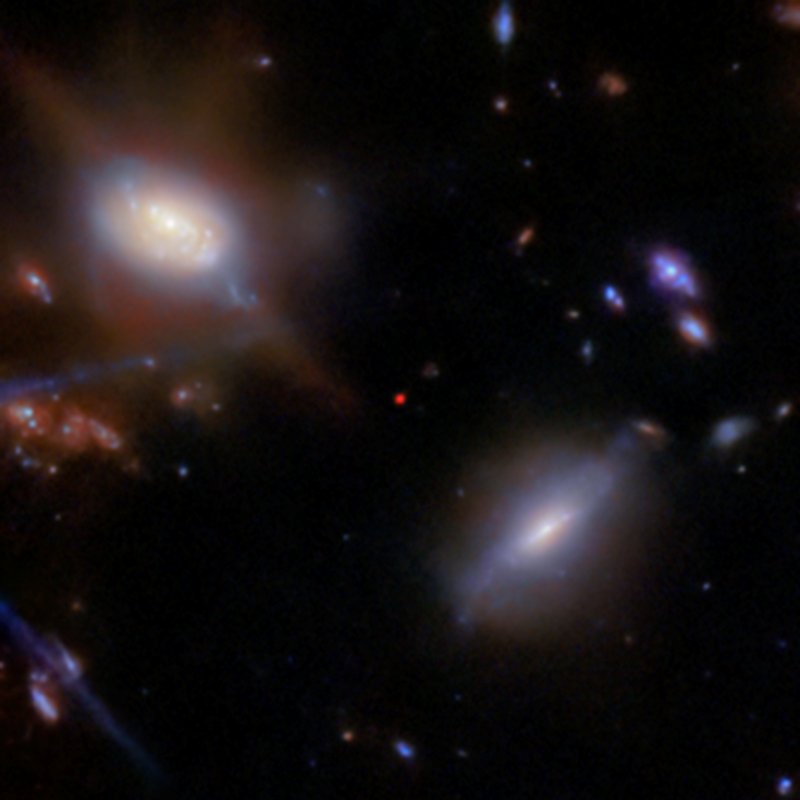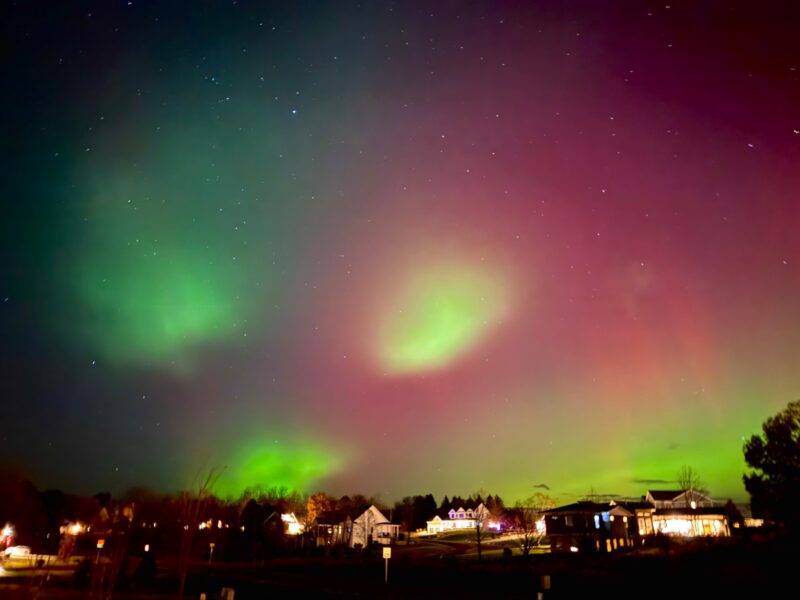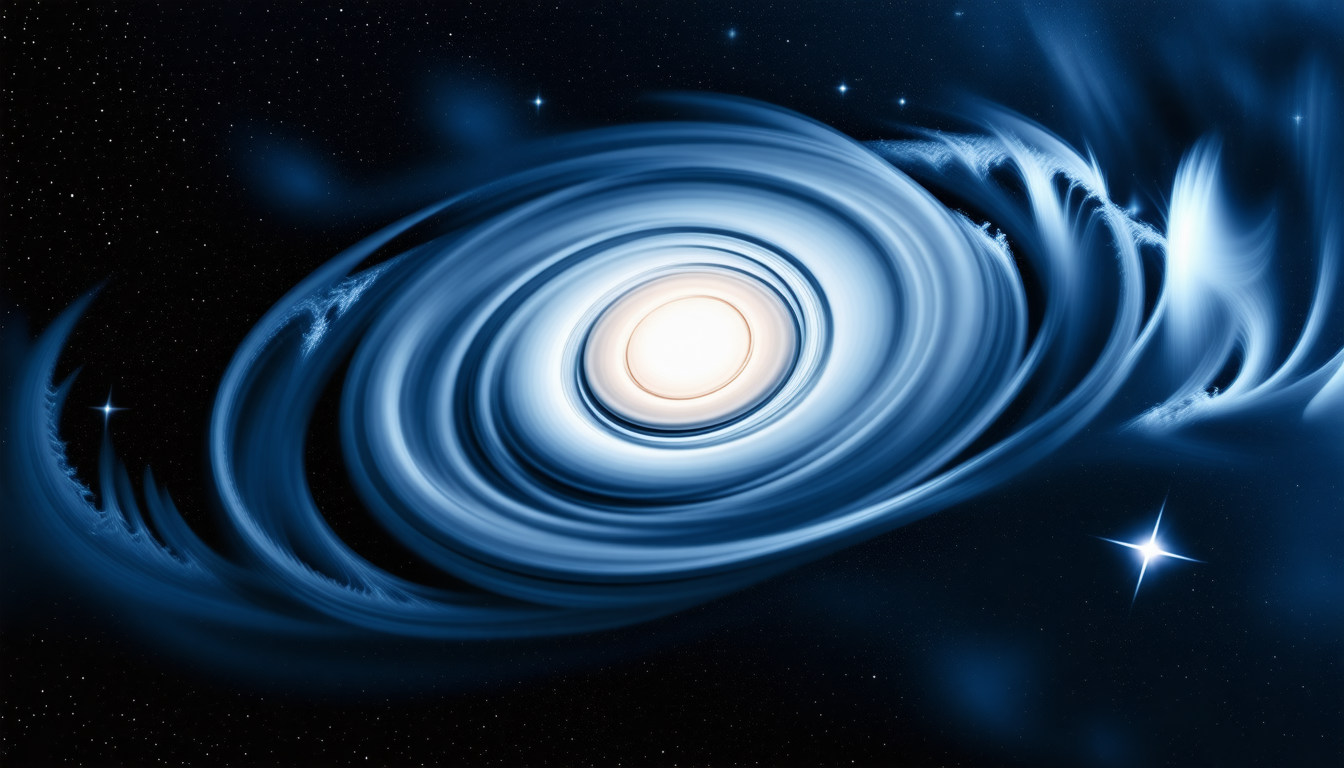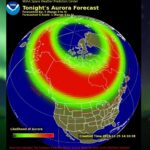Now Reading: Surprising galaxy shines through fog of the early universe
-
01
Surprising galaxy shines through fog of the early universe
Surprising galaxy shines through fog of the early universe

Watch this video about a surprising galaxy that was able to shine through the fog of the early universe.
- The early universe was filled with a thick fog of neutral hydrogen. Even though the first stars and galaxies emitted copious amounts of light, that light struggled to pierce this fog.
- It took hundreds of millions of years for the neutral hydrogen to become ionized – electrons stripped from protons – so that light could travel freely through space.
- But one galaxy in the early universe has caught astronomers by surprise. Scientists have spotted a bright emission of hydrogen from newly discovered galaxy JADES-GS-z13-1, even though the cosmic fog should have absorbed it.
NASA published this original story on March 26, 2025. Edits by EarthSky.
Surprising galaxy in the early universe
On March 26, 2025, an international team of astronomers using the Webb space telescope said they’ve identified bright hydrogen emission from a galaxy in an unexpectedly early time in the universe’s history. The surprise finding challenges researchers to explain how this light could have pierced the thick fog of neutral hydrogen that filled space at that time.
The Webb telescope’s Near-Infrared Camera (NIRCam) discovered the incredibly distant galaxy JADES-GS-z13-1.
Joris Witstok of the University of Cambridge in the United Kingdom and the Cosmic Dawn Center at the University of Copenhagen in Denmark led the international team. The researchers published their peer-reviewed study in the journal Nature on March 26, 2025.

How do we know it’s so far away?
Astronomers believe they’re observing this galaxy as it existed just 330 million years after the Big Bang. But how do they know it’s so far away? Researchers used the galaxy’s brightness in different infrared filters to estimate its redshift.
A redshift is an indicator of a galaxy’s distance from Earth. The amount of shift is based on how its light has stretched out during its journey through expanding space.
The NIRCam imaging yielded an initial redshift estimate of 12.9. Seeking to confirm its extreme redshift, the researchers then observed the galaxy using Webb’s Near-Infrared Spectrograph (NIRSpec) instrument.
In the resulting spectrum, the scientists confirmed the redshift as 13.0. So this is their clue to the galaxy’s distance. A redshift of 13.0 indicates we’re seeing the galaxy just 330 million years after the Big Bang. That would be just a small fraction of the universe’s present age of 13.8 billion years.
But an unexpected feature stood out as well: one specific, distinctly bright wavelength of light, known as Lyman-alpha emission, radiated by hydrogen atoms. This emission was far stronger than astronomers thought possible at this early stage in the universe’s development.

Seeing through the fog
Roberto Maiolino, a team member from the University of Cambridge and University College London, explained:
The early universe was bathed in a thick fog of neutral hydrogen. Most of this haze was lifted in a process called reionization, which was completed about 1 billion years after the big bang. We see GS-z13-1 when the universe was only 330 million years old. Yet it shows a surprisingly clear, telltale signature of Lyman-alpha emission that can only be seen once the surrounding fog has fully lifted. This result was totally unexpected by theories of early galaxy formation and has caught astronomers by surprise.
Before and during the era of reionization, there were immense amounts of neutral hydrogen fog. It surrounded galaxies, blocking any energetic ultraviolet light they emitted. Picture it similar to the filtering effect of colored glass. Until enough stars formed and could ionize the hydrogen gas, no such light – including Lyman-alpha emission – could escape from these fledgling galaxies to reach Earth. The confirmation of Lyman-alpha radiation from this galaxy, therefore, has great implications for our understanding of the early universe.
Kevin Hainline, a team member from the University of Arizona, said:
We really shouldn’t have found a galaxy like this, given our understanding of the way the universe has evolved. We could think of the early universe as shrouded with a thick fog that would make it exceedingly difficult to find even powerful lighthouses peeking through. Yet here we see the beam of light from this galaxy piercing the veil. This fascinating emission line has huge ramifications for how and when the universe reionized.
Looking for answers
Scientists don’t yet know the source of the Lyman-alpha radiation from this galaxy. But it may include the first light from the earliest generation of stars to form in the universe. Witstok said:
The large bubble of ionized hydrogen surrounding this galaxy might have been created by a peculiar population of stars … much more massive, hotter and more luminous than stars formed at later epochs, and possibly representative of the first generation of stars.
A powerful active galactic nucleus, driven by one of the first supermassive black holes, is another possibility the team identified.

Bottom line: Astronomers have discovered a surprising galaxy showing a bright hydrogen emission shining through the fog of the early universe.
Source: Witnessing the onset of reionization through Lyman-a emission at redshift 13
The 2025 EarthSky lunar calendar makes a great gift. Get yours today!
The post Surprising galaxy shines through fog of the early universe first appeared on EarthSky.
Stay Informed With the Latest & Most Important News
Previous Post
Next Post
-
 012024 in Review: Highlights from NASA in Silicon Valley
012024 in Review: Highlights from NASA in Silicon Valley -
 02Panasonic Leica Summilux DG 15mm f/1.7 ASPH review
02Panasonic Leica Summilux DG 15mm f/1.7 ASPH review -
 03How New NASA, India Earth Satellite NISAR Will See Earth
03How New NASA, India Earth Satellite NISAR Will See Earth -
 04And Thus Begins A New Year For Life On Earth
04And Thus Begins A New Year For Life On Earth -
 05Astronomy Activation Ambassadors: A New Era
05Astronomy Activation Ambassadors: A New Era -
06SpaceX launch surge helps set new global launch record in 2024
-
 07Space Force plans new ‘Futures Command’ amid pressure to speed up modernization
07Space Force plans new ‘Futures Command’ amid pressure to speed up modernization




















